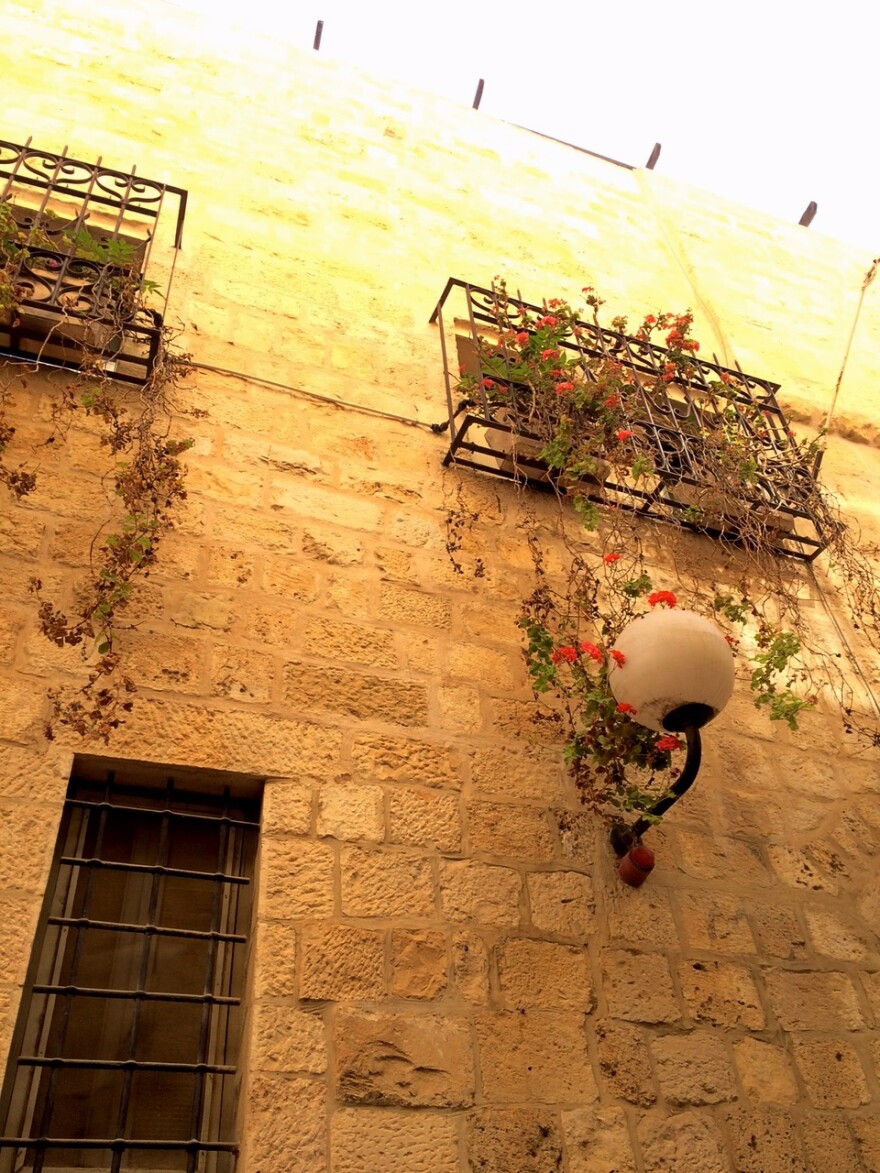It sounded like firecrackers, but it wasn’t: four or five rapid pops. Then it happened again. Pop, pop, pop, pop. It didn’t quite register.
The third time, everything stopped: the song-like prayers at the Western Wall, the hum of conversation from the cluster of pilgrims waiting to enter, the easy breathing of two friends who’d put away work for a few hours of touring.
Two students ahead of us in the queue checked the app on their phones for the “red alert” message that would confirm a rocket attack. Deciding not to wait, they fled up the stone steps. We followed them. An old woman swathed in black clothing jumped up from her street-corner chair, raised her fist, and began to shout at an unseen enemy.
“What’s the fastest way out?” I asked the students.
“Do you know how to get back to the Cardo?”
“Yes.” I was mostly sure I did.
“Go straight up and keep going.” Before I could ask what to do next, she and her friend had vanished.
As briskly as we could on the cobblestone streets, we retraced our steps. We reached the Cardo, an ancient thoroughfare now a ruin of broken columns. I saw a staircase leading up and out of sight. We entered it. And just like that, we were alone in a quiet, narrow alleyway flanked by tall residences.

There we were: within walls inside of walls, inside of walls. Anything horrific about to happen would happen somewhere else first. We slowed our steps and continued to climb.
Eventually, my friend Diane and I emerged into the busy commercial area that would lead us out of the Old City. None of the shoppers seemed affected by what we’d witnessed. We began to wonder if it had been real, or just a phantom manifestation of the violence visitors to Israel are warned they may encounter. It didn’t matter. It was our last day in Jerusalem and there was no more time to attempt a descent back to the Western Wall.
Still, we weren’t willing to leave without some remembrances, so we made a brief stop at the souk, the Arab open-air marketplace. Souvenir scarves, woven purses, and incense fumes waved in our faces. Sellers beckoned with promises of good deals. It wasn't long before we found the spice booth.
Handwritten signs listed the contents of the mysterious blends on display in open containers: “Rice Spice,” “Meat Spice,” “Falafel Spice.” Individual spices such as “safran” and “anis” weren’t nearly as intriguing.

Shoppers are expected to haggle, so it surprised us when the spice merchant turned surly. He'd already added dried mangos and ginger to Diane’s order, unasked. I was down to my last Israeli shekel notes, but he demanded a hefty surcharge in American money for my three small containers of za’atar (a mixture of thyme, sumac, and sesame that’s Biblical in origin). I put one container back but he remained insulted. I gave him what amounted to somewhere between $15 and $20 for two and we left.
That night as we packed our bags for home, we listened to newscasts for mentions of what we’d heard earlier, but there were none.
We wrapped our treasures carefully. Rock salt crystals from the bottom of the Dead Sea, where nothing but minerals can survive. Israeli sugar scented with vanilla in small, white packets. Turkish coffee in a red, foil bag devoid of serving size or nutrition facts. And most unassuming of all, two small containers of spices that would travel thousands of miles to deliver the complicated flavor of history.






